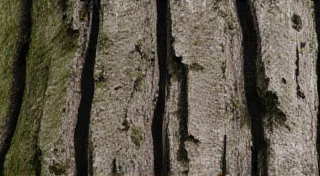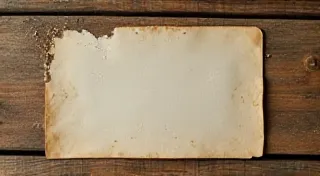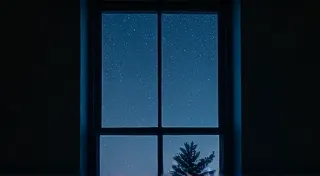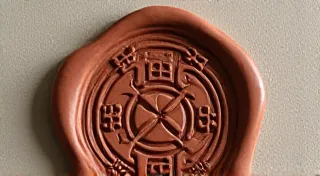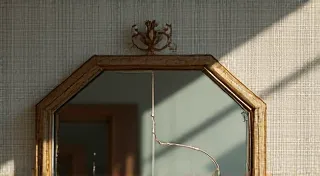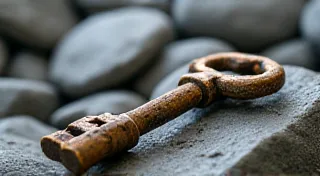The Language of Texture: Adding Depth Through Etched Relief
There’s a certain romance attached to antique bottles. Not just their beauty, though that's undeniable, but the sense of history held within the glass. Imagine them, cradled in the hands of a traveling salesman a century ago, or perched on a shelf in a general store, dispensing remedies and whispers of a bygone era. It's a silent story, etched into the very substance of the glass. And like a skilled musician coaxing melodies from an accordion, reverse glass etching allows us to add another layer to that narrative, to amplify the emotions already residing within the bottle’s form.
My fascination began, strangely enough, with accordions. My grandfather, a quiet man of meticulous habits, possessed a particularly beautiful Hohner, its bellows worn soft with use, its keys gleaming with a gentle patina. He rarely played, but simply holding it, feeling the cool metal against my fingers, conveyed a depth of feeling I couldn’t articulate. The textures – the corrugated bellows, the subtle indentations of the keys, the worn smoothness of the casing – spoke volumes about time, love, and a life fully lived. It became clear to me that texture, more than color or form, held the key to conveying emotion.
That same principle applies to glass etching, and especially when focusing on antique bottles. While many enjoy the clean lines of simple designs, the true beauty of reverse glass etching—that’s when you start to understand the language of texture—comes from manipulating the etching cream to create a tactile, almost three-dimensional relief on the glass surface. It’s about more than just creating a pretty picture; it’s about building a story you can feel.
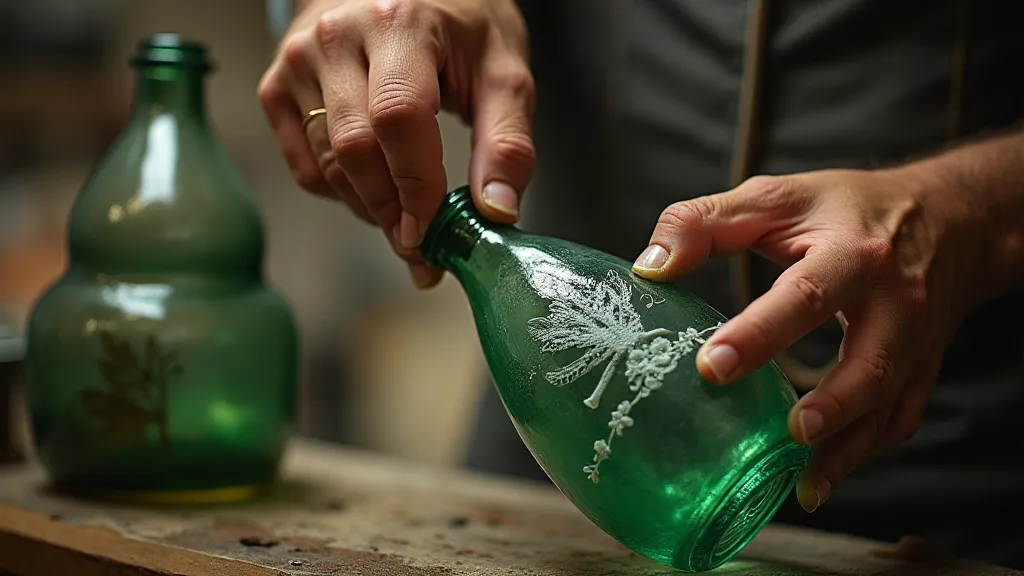
Understanding the Technique: From Mask to Relief
For those unfamiliar, reverse glass etching, unlike traditional etching, builds up the design rather than removing it. A stencil is applied to the bottle, and etching cream is applied *over* the stencil. The cream eats away at the exposed glass, leaving the area protected by the stencil untouched. When the stencil is removed, a raised design is revealed. This seemingly simple process becomes incredibly nuanced when you begin to manipulate the etching cream’s application.
The quality of your stencils is paramount. Professionally cut vinyl stencils offer the cleanest lines and sharpest details, but even hand-cut paper stencils can yield beautiful results with a little care and experimentation. The key is precision; any gaps or imperfections in the stencil will allow the cream to bleed, resulting in a blurry, less defined design. This is especially important when dealing with antique bottles, where the delicate glass can be easily damaged by harsh chemicals or rough handling.
The Art of Stippling: A Field of Whispers
One of the most captivating ways to add texture is through stippling. Rather than applying the cream in broad strokes, stippling involves using a dauber or brush to apply it in a series of tiny dots. The density of the dots determines the level of relief. A sparse stippling creates a subtle, almost ghostly effect – perfect for depicting fog, distant hills, or the delicate aging of a historic building. A heavier stippling creates a more pronounced texture, akin to a field of pebbles or the rough bark of a tree. The techniques involved are similar to what one might employ when crafting frozen moments one finds in vintage advertising.
Imagine etching a flock of birds rising from a misty landscape. Using a light stippling for the background allows the atmosphere to almost breathe, while a denser stippling can be used to define the individual birds, creating a dynamic interplay of light and shadow. The antique bottle itself contributes to this – the subtle imperfections in the glass, the tiny bubbles trapped within, all become part of the story.
Cross-Hatching: Weaving a Tangible Tapestry
Cross-hatching takes this textural approach a step further. By applying the cream in a series of intersecting lines, you create a woven-like effect, generating a sense of depth and complexity. The angle and spacing of the lines determine the final appearance. Closely spaced, sharply angled lines create a rough, almost chaotic texture, while wider, more evenly spaced lines create a more organized, geometric pattern.
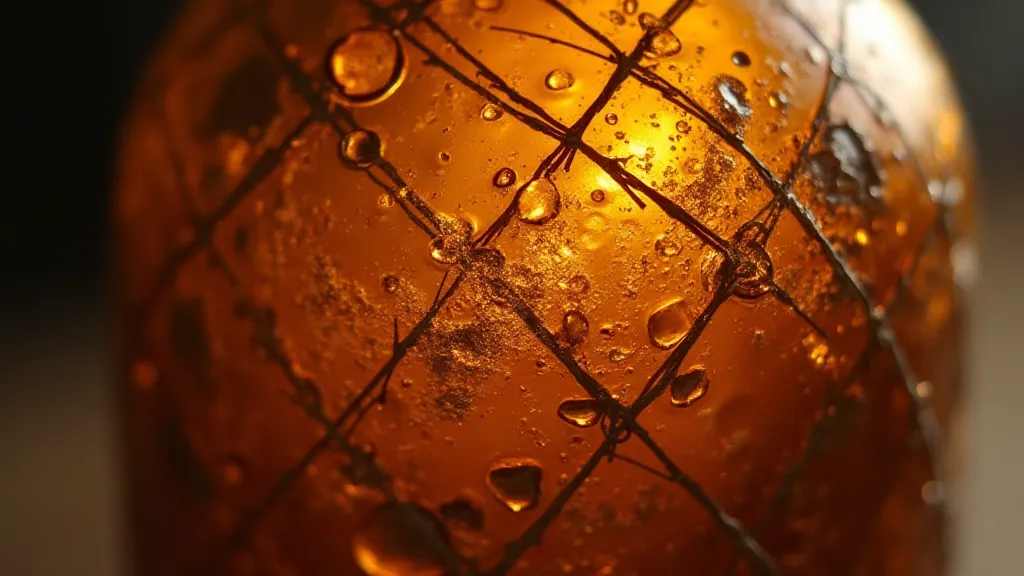
Consider using cross-hatching to depict foliage on an antique bottle. The intersecting lines can mimic the intricate network of veins in a leaf, creating a sense of organic growth. Or, imagine using it to create a stylized depiction of a weathered stone wall, each line representing a different brick or stone. The application of layering techniques, especially when striving for complex design elements, can sometimes be evocative of the methods used to create vintage labels – a process best explored in whispers in the glass of a bygone era.
The Importance of Patience and Experimentation
Mastering these techniques isn’t about following a rigid formula; it’s about understanding how the etching cream interacts with the glass and the stencil. It’s about observing, experimenting, and learning from your mistakes. Start with small practice pieces, experimenting with different application methods and stencil designs. Note the variations in the etching cream’s behavior on different parts of the bottle – some areas may etch faster than others due to variations in glass thickness or curvature. Sometimes, the limitations of the etching process require a thoughtful and intuitive design approach, allowing the bottle's unique form to guide the creative process—a philosophy detailed in fractured reflections.
Antique bottles, in particular, demand a delicate touch. The glass is often thinner and more fragile than modern glass, and handling it requires extra care. Always wear appropriate safety gear, including gloves and eye protection, and work in a well-ventilated area. Don't rush the process; allow the etching cream to work its magic at its own pace.
Beyond Aesthetics: Conservation and Appreciation
Reverse glass etching isn’t just a decorative craft; it can also be a form of conservation. While completely restoring an antique bottle isn’t always desirable (many collectors value the original wear and imperfections), carefully applied etching can highlight its beauty and preserve its historical significance. Subtle, understated designs can draw attention to the bottle’s shape and details, allowing its story to be appreciated by future generations. Sometimes, the narrative you’re trying to convey through etching calls for creating entire imagined landscapes upon the bottle’s surface, a practice that opens up exciting possibilities for storytelling.
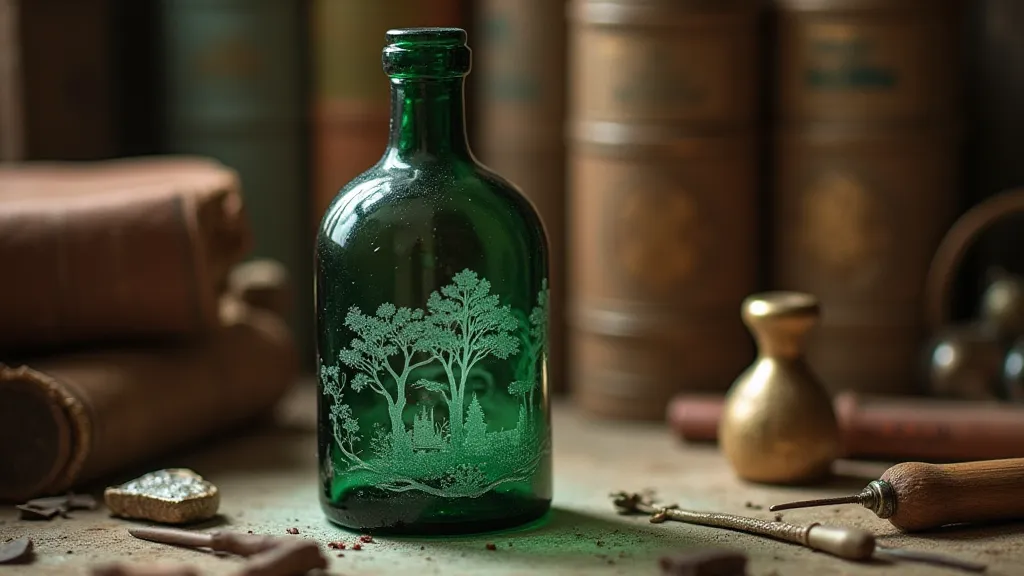
Ultimately, the art of reverse glass etching on antique bottles is about more than just creating a beautiful object. It’s about connecting with history, appreciating craftsmanship, and adding another layer of meaning to these silent storytellers. It's about listening to the whispers of the past and translating them into a language of texture, a language that can be felt as much as it can be seen – a language as evocative and enduring as the antique bottles themselves. The design choices are often dictated by the bottle's unique characteristics—its shape, color, and any existing imperfections—a careful consideration that contributes to the final piece’s narrative power. This narrative potential extends beyond mere aesthetics; it allows us to breathe new life into these relics of the past, transforming them into tangible stories waiting to be discovered. Further explorations into design philosophy and narrative integration can be found through resources specializing in visual storytelling techniques. The combination of artistry and technical skill is what truly elevates reverse glass etching beyond a simple craft, transforming it into a powerful medium for self-expression and cultural preservation. It’s a craft that rewards patience, observation, and a deep appreciation for the beauty of imperfection. It’s a dialogue between the artist, the glass, and the history embedded within – a conversation that echoes through time.
